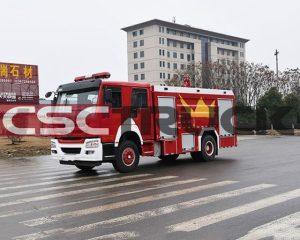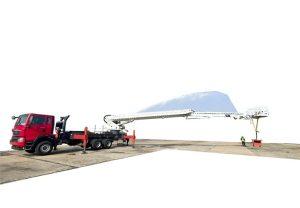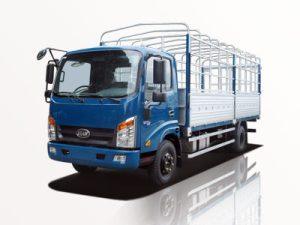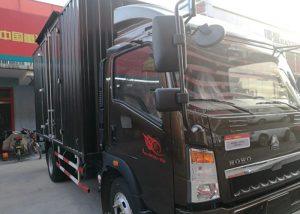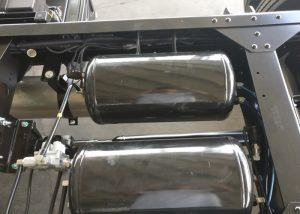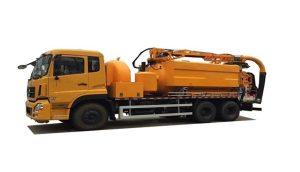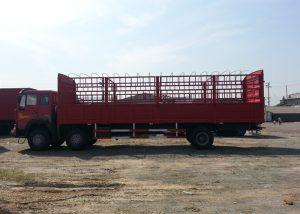Monday to Saturday - 8:00 -17:30
Exploring the Biggest Bucket Truck: Features, Uses, and Benefits
Introduction
Bucket trucks, also known as aerial work platforms or cherry pickers, are essential vehicles in various industries. Whether used for electrical maintenance, tree trimming, or building maintenance, their ability to reach high spaces safely and efficiently makes them invaluable. Among the multitude of models available, the biggest bucket trucks stand out due to their impressive capabilities. This article will explore the biggest bucket trucks on the market, their features, applications, specifications, and key considerations when choosing one for your needs.
The Need for Bucket Trucks
Understanding the necessity of bucket trucks is fundamental to appreciating why the biggest models are essential. Industries that frequently require access to elevated areas include:
- Electrical Utilities
- Telecommunication
- Construction
- Tree Services
- Sign Installation
The versatility and operational efficiency provided by bucket trucks greatly enhance productivity and safety in these sectors..
What Makes a Bucket Truck Big?
The term “biggest bucket truck” refers to the truck’s height capacity, weight, and overall dimensions. Features that contribute to a bucket truck being classified as large include:
- Height Reach: Generally over 60 feet
- Platform Capacity: Can support 600 lbs or more
- Stability: Reinforced chassis and wider stabilizers
- Weight: Heavier duty for tougher jobs
Key Features of the Biggest Bucket Trucks
1. Height and Reach
One of the most impressive features of the largest bucket trucks is their height reach. Models can go up to 100 feet or more, facilitating tasks like:
- Power Line Maintenance
- High-Rise Building Repairs
- Tree Trimming and Removal
2. Weight Capacity
Another critical dimension of performance is the weight capacity. Larger bucket trucks can lift significant loads, which is particularly important for:
- Heavy Equipment Installation
- Multiple Workers and Tools at Once
3. Reach and Stabilization
Outriggers
Many of the biggest bucket trucks are equipped with stabilizers or outriggers. These features provide added stability when the bucket extends to its highest point, preventing tipping.
Articulation and Reach
Articulating booms found on larger bucket trucks allow for positioning of the platform in hard-to-reach places, improving accessibility without needing additional equipment.
Top Models of Bucket Trucks
| Model | Height Capacity (ft) | Weight Capacity (lbs) | Engine |
|---|---|---|---|
| Ford F750 | 75 | 1,000 | 6.7L Diesel |
| Altec LRV56 | 56 | 600 | Gasoline |
| Terex Hi-Ranger | 85 | 750 | Diesel |
| International Durastar 4300 | 100 | 1,200 | DT466 Diesel |
Applications of the Biggest Bucket Trucks
1. Utility Services
In utility work, bucket trucks are indispensable for restoring power in storm situations or performing routine maintenance. Crews can reach power lines safely and perform repairs quickly to minimize outage times.
2. Tree Care Services
Arborists and tree care professionals use bucket trucks to safely trim or remove tall trees without the risk of climbing. These trucks are engineered to provide a stable platform for workers while allowing them to maneuver branches safely.
3. Building Maintenance
For skyscrapers and multi-story buildings, the biggest bucket trucks are essential for window washing, facade repairs, and installing signs at heights. Their ability to reach heights ensures that maintenance can occur without scaffolding.
Considerations When Choosing a Bucket Truck
1. Height Requirements
Evaluate your projects’ specific height needs first. Consider not only current needs but potential future uses. Investing in a larger model may save money in the long term.
2. Payload and Capacity
Ensure the truck can handle the intended load, including operators, tools, and materials. Overloading can reduce effectiveness and can be hazardous.
3. Turn Radius and Size
The maneuverability of the bucket truck is essential, especially in urban environments with narrow streets or tight job sites. Consider models with a more compact design if this is a concern.
4. Maintenance and Support
Choose manufacturers with good after-sales service and parts availability. Routine maintenance is vital to keeping operations smooth and safe.
Safety Features and Protocols
1. Operator Training
Effective use of bucket trucks depends heavily on operator training. Workers should undergo specific training that covers safe usage practices and understands the truck’s features.
2. Safety Equipment
Bucket trucks should come equipped with various safety features, including guardrails, harness anchorage points, and easy access ladders for entering and exiting the bucket safely.
3. Regular Inspections
Performing regular inspections of the truck is vital. Items to check include hydraulic systems, stabilization equipment, and electrical safety systems.
Cost Factors Involved with Bucket Trucks
1. Initial Purchase Price
The cost of the biggest bucket trucks can range widely based on the model, features, and manufacturer. Generally, prices can soar into the hundreds of thousands for high-reach models.
2. Maintenance Costs
Maintenance can add up, so factor in annual costs for things like inspections and repairs. Extend the life of your truck with regular upkeep.
3. Operating Costs
Fuel costs and insurance should also be factored into the overall cost of ownership. Diesel engines typically provide better fuel economy than gasoline ones.
Practical Tips for Using Bucket Trucks
- Always wear appropriate safety gear when operating or working from a bucket truck.
- Check weather conditions before use; high winds can be dangerous.
- Ensure a clear path for operation to avoid obstacles.
- Communicate effectively with ground crew for safety and efficiency.
FAQs on the Biggest Bucket Truck
1. What is the maximum height a bucket truck can reach?
The tallest bucket trucks can reach heights of over 100 feet, although most commonly used models max out around 70-85 feet.
2. How much weight can a bucket truck hold?
Most bucket trucks can safely lift between 600 to 1,200 pounds, depending on the model and specifications.
3. What safety certifications should bucket truck operators have?
Operators should ideally hold certifications from organizations like OSHA, focusing on aerial lift operations and general safety practices.
4. Are bucket trucks rented or purchased?
Both options are available. For short-term projects, renting may be more economical; for long-term use, purchasing could be more beneficial.
5. What types of fuel do bucket trucks use?
Most bucket trucks operate on diesel or gasoline. Diesel engines are favored for their fuel efficiency and power.
6. How often should maintenance be performed on a bucket truck?
Routine checks should occur at least monthly, with detailed inspections recommended quarterly or after significant use.


